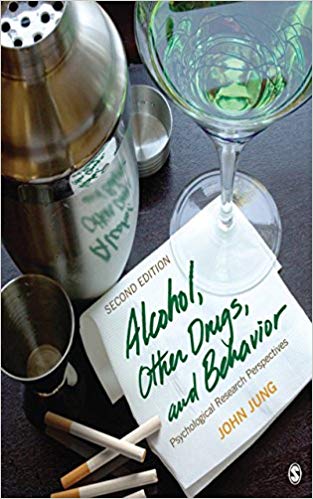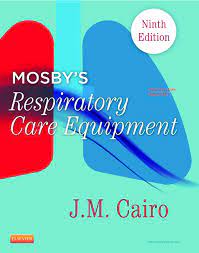Description
Testbank For Alcohol Other Drugs And Behavior 2nd Edition By Jung
Chapter 2
- Children’s first exposure to alcohol and drugs is primarily through _______________.
-
-
-
-
- parents
- television
- relatives
- all of the above
-
-
-
- Adolescence may view drug use as:
a. sophisticated
b. a rite of passage
c. attractive
d. all of the above
- For some adolescents, their first experience with alcohol and drugs may be:
a. Satisfying
b. Unsatisfying
c. both a & b
d. a only
- Because licit drugs are commonly used at social gatherings such as parties and celebrations, it is important that researchers:
-
-
-
-
- Focus on only researching the benefits of licit drug use
- Focus on only researching the harmful effects of licit drug use
- Study both the benefits and harmful effects associated with licit drug use
- Focus only researching illicit drug use
-
-
-
- Theories that focus on the role of pharmacological properties of drugs tend to _________ the role of ______________ variables.
-
-
-
-
-
-
-
- Include, physiological
-
-
-
-
-
-
b. Include, psychological
-
- Ignore, physiological
- Ignore, psychological
- The importance of examining psychological theories of drug use is that it allows us to see
-
-
-
-
- What causes initial drug use
- What leads to initial drug use
- What results from initial drug use
- What explains initial drug use
-
-
-
- Social learning theory emphasizes expectancies about:
-
-
-
-
- Effects of alcohol and other drugs formed by observation
- Effects of alcohol and other drugs formed through experience
- Effects of alcohol and other drugs acquired from stereotypes
- Effects of alcohol and other drugs predicted from theory
-
-
-
8. Social learning theory recognizes which of the following:
-
-
-
-
-
-
-
- That we form beliefs about self efficacy in using drugs
- Interactions between cognitive and affective states
- The relationship of coping skills to drug use
- All of the above
-
-
-
-
-
-
- How does classical conditioning play a role in the processes underlying expectancy effects?
-
- We form associations between drug use and certain effects
- We expect to feel a certain way through varying dose levels of drugs
- We form disassociations between drug use and certain effects
- Classical conditioning does not play a role in the processes underlying expectancy effects
- One limitation of the AEQ is that it examines only _____________ expectancies
-
- Direct
- Indirect
- Positive
- Negative
- Negative expectations are said to possibly have ____________ effects compared to positive expectations because they involve _______________ consequences.
-
- Stronger, delayed
- Weaker, delayed
- Stronger, immediate
- Weaker immediate
- Which of the following is true about light vs. heavy drinkers:
-
- Light drinkers typically drink when they’re in a positive mood
- Heavy drinkers typically drink when they’re in a positive mood
- Heavy drinkers typically drink when they’re in a negative mood
- a & c
- Lab testing of implicit cognition using semantic priming have shown that:
-
- More drinking will occur for heavy drinkers but not light drinkers when presented with alcohol cues
- Less drinking will occur for heavy drinkers but not light drinkers when presented with alcohol cues
- More drinking will occur for light drinkers but not heavy drinkers when presented with alcohol cues
- More drinking will occur for both heavy drinkers but not light drinkers when presented with alcohol cues
- In one study (Windle & Scheidt, 2004) with a large ethnically diverse sample of male and female alcoholic in-patients, which subtype had more serious alcoholism:
-
- antisocial personality
- negative affect
- mild course
- polydrug
- Which of the following is true about peer selection:
-
- Adolescence who already use drugs seek out the company of those who are not involved in drugs
- Adolescence who already use drugs seek out the company of those who are involved in drugs
- Adolescence who disdain drug use seek out the company of those who also disdain drug use
- b & c
- Compared to minimal exposure to nonalcohol-related words, viewing alcohol-related led to all but which of the following (Friedman et al, 2007)?
-
- High expectancy for alcohol tension reduction led to more cooperation with a stranger
- High expectancy for alcohol tension reduction led to more willingness to be evaluated by an opposite sex stranger
- High expectancy that alcohol releases aggression led to hostility toward someone who provoked them
- Low expectancy that alcohol reduced tension led to less willingness to be evaluated by an opposite sex stranger
- According to the social development model, which of the following was a better predictor of alcohol problems:
-
- Perceived harmfulness of alcohol use
- Peer alcohol initiation
- Ethnicity
- Social development as early initiation
- _____________ and _____________ may be the primary motive for drug use rather than tension reduction.
-
- relaxation, control
- power, relaxation
- power, control
- relaxation, excitation
- Which of the following theories propose that inborn temperament or acquired personality traits influences alcohol and drug use?
-
- Cognitive theories
- Personality/temperament theories
- Social learning theories
- Psychodynamic theories
- A problem with psychoanalytic theories of the personality processes involved in drinking is that the formulations are _____________ to test because they involve _____________ about early experiences where there is usually no ______________ evidence.
-
- Easy, stereotypes, objective
- Easy, assumptions, personal
- Difficult, stereotypes, personal
- Difficult, assumptions, objective
- Which of typology is characterized as taking longer to develop, having less dependence, fewer alcohol related problems, and less psychopathology.
-
- Type A
- Type B
- Type 1
- a & c
- Both ____________ and _______________ theories emphasized individual differences in temperament.
-
- Personality/temperament, biologically based
- Personality/temperament, cognitive based
- Typology, cognitive based
- Personality/temperament, typology
- A comprehensive model that examined the interrelationship among inherited tendencies toward alcoholism, localized brain functions, childhood behavior problems, and alcohol abuse demonstrates that predisposition to alcohol are stronger among __________ than ____________.
-
- Adolescents, adults
- Hispanics, non-Hispanics
- Men, women
- Rich, poor
- All but which of the following is true about self-awareness and alcohol?
-
- Individuals high in self-awareness react to alcohol cautiously because they came from families with a history of alcohol problems
- Individuals low in self-awareness react to alcohol cautiously because they came from families with a history of alcohol problems
- Individuals low in self-awareness were less vigilant towards problems with alcohol in their family history and were more likely to develop alcohol problems
- Individuals high in self-awareness recognize their higher risk towards developing alcohol problems because they came from families with a history of alcohol.
- Causal inferences are difficult to predict between personality and drugs because:
-
- There is no connection between personality and drugs
- There is a direct connection between personality and drugs
- There is an indirect connection between personality and drugs
- The relationship between personality and drugs is unobservable
- During the 1940’s, smoking was often depicted as:
-
- Glamorous and sophisticated
- A way to cope with stress
- An enjoyable form of relaxation whether alone or at social gatherings
- All of the above
- Which of the following contribute to the distinct aspects between alcohol intake and smoking?
-
- Smoking occurs periodically throughout the day, everyday for regular smokers
- For most people alcohol is ingested on the weekends unless for highly dependent drinkers
- The impact of smoking is much quicker than the effect of alcohol
- All of the above
- The psychological effect of nicotine intake through smoking is paradoxical because people associate smoking with _____________ when nicotine actually produces _______________.
-
- tension, relaxation
- relaxation, alertness
- alertness, relaxation
- tension, alertness
- Women who smoke have observed physical benefits such as:
-
- weight gain
- weight loss
- hair loss
- hair growth
- Which of the following statements is true:
-
- Psychological factors initially activate smoking, but nicotine level becomes the major determinant during later stages in the development of smoking
- Sociological factors initially activate smoking, but nicotine level becomes the major determinant during later stages in the development of smoking
- Psychological factors initially activate smoking, but serotonin level becomes the major determinant during later stages in the development of smoking
- Nicotine level initially activate smoking, but psychological factors becomes the major determinant during later stages in the development of smoking
- The__________ _____________ model assumes that psychological stressors are a major motivator of smoking.
-
- nicotine regulation
- cognitive regulation
- multiple regulation
- pharmacological regulation
- Caffeine has been associated with all but which of the following disorders:
-
- restless legs syndrome
- depression
- attention deficit hyperactive disorder
- antisocial personality disorder
- ________ _________ theory focuses on individual differences as the cause of problem drug use.
-
- anti-social behavior
- personality/temperament
- problem behavior
- social personality
- The developmental model of vulnerability to drug used proposed that:
-
- risk factors such as parental drug abuse or depressed mood decrease the likelihood that a child will develop drug abuse
- risk factors such as parental drug abuse or depressed mood increase the likelihood that a child will develop drug abuse
- risk factors such as peer drug abuse or depressed mood decrease the likelihood that a child will develop drug abuse
- risk factors such as age or depressed mood increase the likelihood that a child will develop drug abuse





Be the first to review “Testbank For Alcohol Other Drugs And Behavior 2nd Edition By Jung”